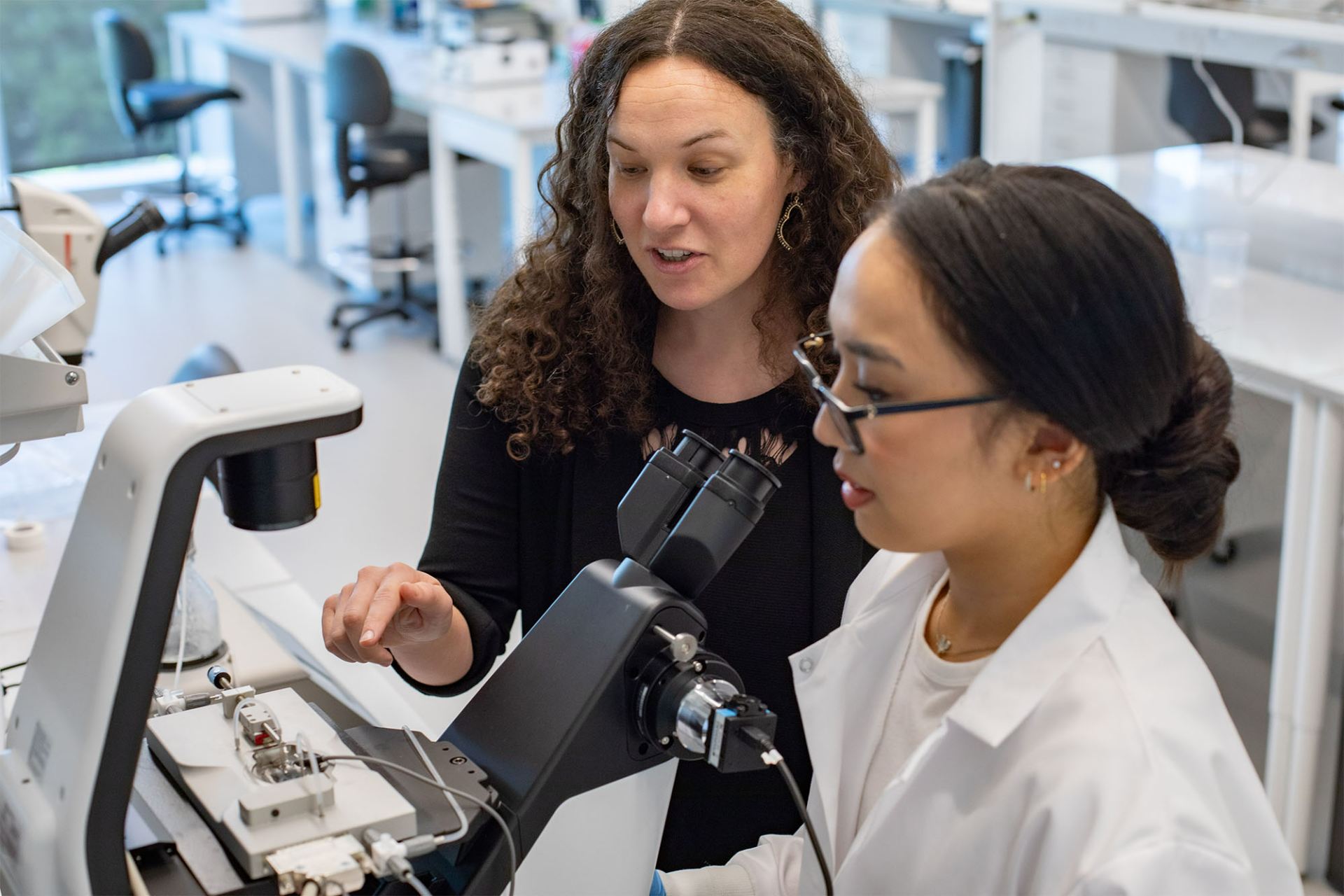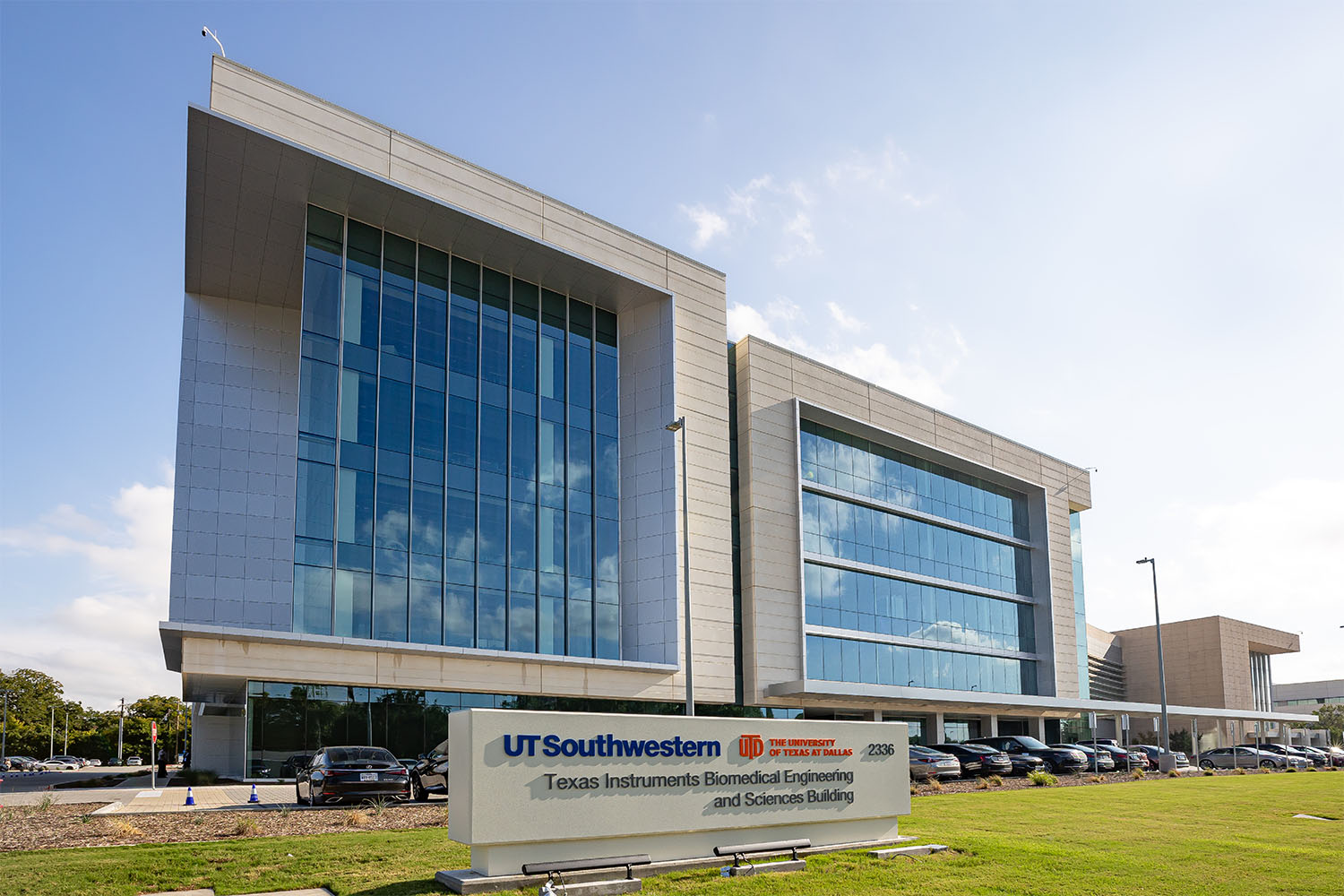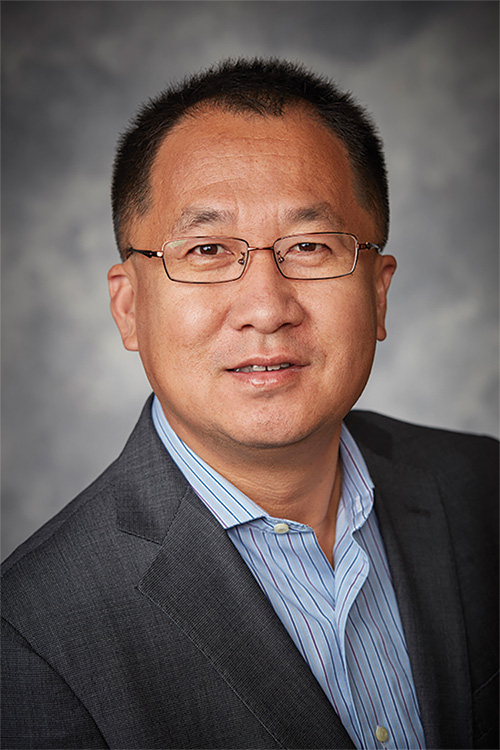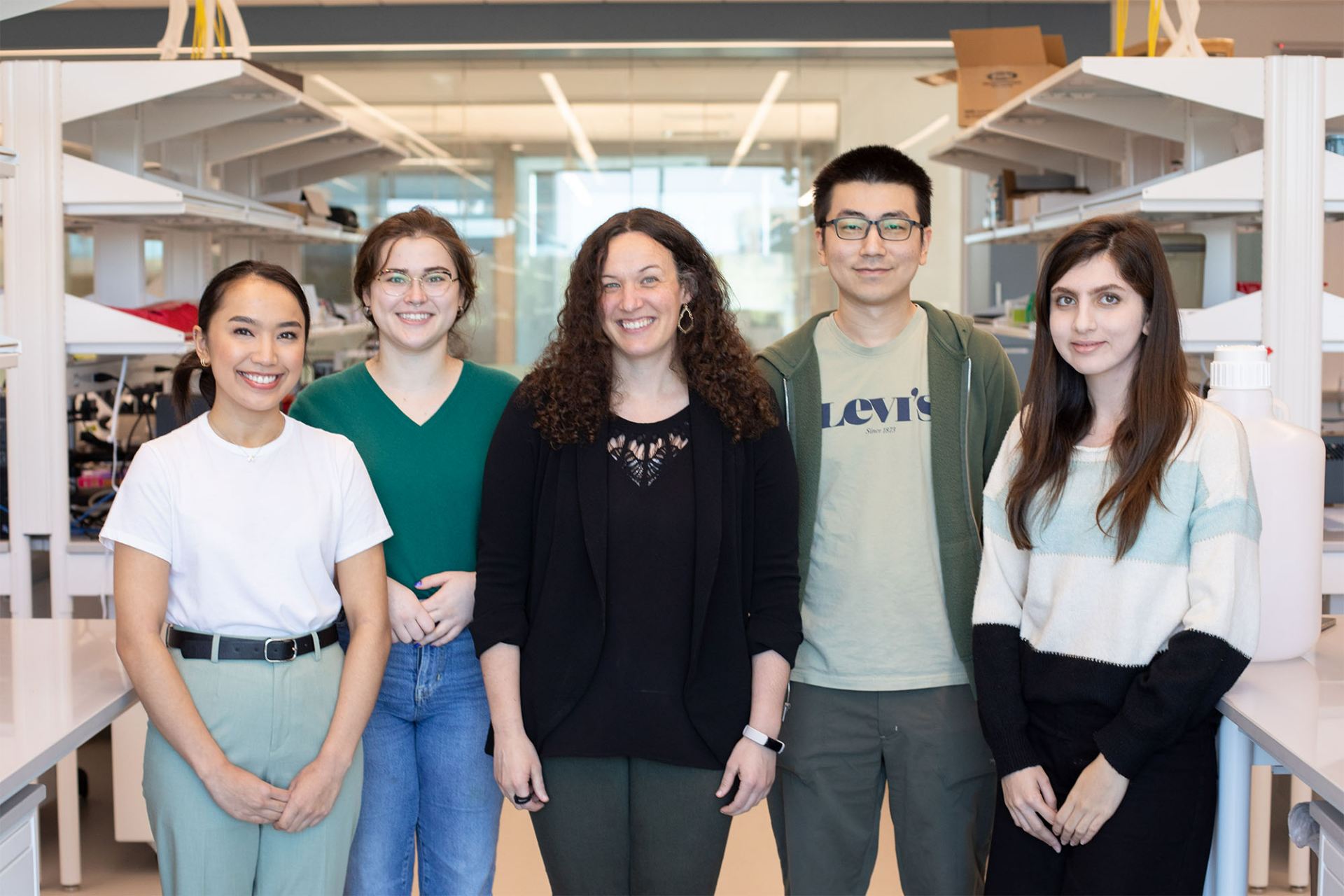UTD Engineers, Scientists Strengthen Teamwork with Physicians
By: Kim Horner | Jan. 19, 2024

Mechanical engineer Dr. Zhenpeng Qin is moving his lab 20 miles south this month to what might seem like an unlikely location for a University of Texas at Dallas associate professor: the UT Southwestern Medical Center campus.

Qin has worked closely with UT Southwestern physicians for years to develop a promising technique to deliver medication through the blood-brain barrier. And soon, he and his clinical research partners at the medical center will be just a few minutes apart.
Qin is one of seven UT Dallas researchers moving their labs from Richardson to the new Texas Instruments Biomedical Engineering and Sciences Building on UT Southwestern’s East Campus in Dallas. The joint facility, which was dedicated in October, was designed to facilitate greater collaboration between researchers at both institutions. Established researchers expect to finish moving in this spring, while additional UT Dallas faculty members will be added in the future.
Working in closer proximity with UT Southwestern physicians will help Qin advance his technique, which has shown promise in a preclinical study for treating glioblastoma, the most common form of brain cancer.
“Our new lab will give us the opportunity to deepen our collaborations with our UT Southwestern partners to put medicine in the brain,” said Qin, Fellow, Eugene McDermott Distinguished Professor. “Moving into the new building will allow us to engage with clinical partners and perform studies that were previously challenging to do.”
Built for Collaboration
The $120 million, 150,000-square-foot facility, containing labs, classrooms and a Biodesign Center, was made possible by a transformative gift from Texas Instruments, support from the Permanent University Fund of the UT System and additional philanthropic donations.
“We are excited about the opportunities the Texas Instruments Biomedical Engineering and Sciences Building offers for our students and faculty,” said Dr. Shalini Prasad, professor and department head of bioengineering and a Cecil H. and Ida Green Professor in Systems Biology Science in the Erik Jonsson School of Engineering and Computer Science. “UT Dallas researchers have the opportunity to make an impact through closer collaborations that will leverage their strong engineering foundational work.”
Support for Science

In addition to $15 million from Texas Instruments and $90 million from the UT System’s Permanent University Fund, philanthropic support has been key to the development of the Texas Instruments Biomedical Engineering and Sciences Building. The project was funded in part by a $2 million investment from the Eugene McDermott Foundation and by Lyda Hill Philanthropies through a $1 million grant for the building’s construction and a further $250,000 grant establishing the Lyda Hill Biomedical Innovation Fund, which will stimulate collaborative research and drive high-impact translation in the facility. Dr. Zhenpeng Qin and Dr. Jie Zheng are the first two researchers supported by the fund.
Video: Thank You to Donors
Video: Learn More About the New TI Building
To date, UTD faculty members have worked on 163 projects in collaboration with UT Southwestern researchers. These initiatives have generated $110.5 million in research awards to UTD, including for Qin’s work with UT Southwestern colleagues Dr. Robert Bachoo, associate professor of neurology and internal medicine, and Dr. Elizabeth Maher, professor of internal medicine and neurology.
In another partnership, UTD researcher Dr. Kristin Miller and Dr. María Florián-Rodríguez, assistant professor of obstetrics and gynecology at UT Southwestern, have joined forces to develop better treatments for pelvic floor disorders. Miller moved into the new building last fall to work more closely with Florián-Rodríguez.
“If you want to get feedback on a new medical device, who better to ask than the clinician who will one day implant and monitor the device? It’s an opportunity we’re very excited about,” said Miller, associate professor of bioengineering and mechanical engineering.
The UT Dallas collaborations with UT Southwestern span a range of disciplines. Dr. Jie Zheng, Distinguished Chair in Natural Sciences and Mathematics and professor of chemistry and biochemistry in the School of Natural Sciences and Mathematics, is moving south to work more closely with UT Southwestern researchers, including Dr. Jer-Tsong Hsieh, professor of urology; Dr. Payal Kapur, professor of pathology and urology; Dr. William Lee, professor of internal medicine; Dr. Xiankai Sun, professor of radiology and in the Advanced Imaging Research Center; and many others. Zheng said working on the UT Southwestern campus will make it possible to develop innovative nanomedicines that address unmet needs in the clinics.
“My research program has greatly benefited from more than one decade of fruitful collaboration with many colleagues at UTSW. The building will further strengthen and accelerate such collaborations, allowing rapid tests of our innovative nanotechnologies in a variety of animal models for disease diagnosis and treatment,” Zheng said. “In addition, we will learn from them about urgent needs in clinics, so that we can develop clinically translatable nanotechnologies to target these needs.”
Strengthening Team Science

One of the building’s key features is the Biodesign Center, which includes a large assembly/design studio, metal fabrication shop and rooms for 3D printing for developing prototypes. Researchers said having the center on-site will expedite the development of new treatments. If researchers need to change the size or another property of a medical device, for example, they can print a new component or fabricate a new prototype rapidly without leaving the building.
“The proximity of the Biodesign Center will give us flexibility to adapt, modify and design testing tools to fit our evolving experimental needs,” said Lily Buchanan, a UTD biomedical engineering doctoral student and research assistant in Miller’s lab. She said having the lab on the UT Southwestern campus also makes it easier for researchers to get tissue samples or attend lab meetings with physician collaborators.
UT Southwestern’s Florián-Rodríguez said working on the same campus opens new possibilities for their research on pelvic floor disorders, a group of conditions that affect 1 in 4 adult women.
“There are many gaps in knowledge about the pelvic floor that we’re hoping to fill in. That’s why I feel like this collaboration is priceless,” Florián-Rodríguez said. “Having Dr. Miller nearby, just a quick car ride or a walk away, means that we’re going to be able to really advance our field of research.”
Miller said their collaboration, as well as many others, will help researchers move potentially effective new treatments forward.
“It’s so helpful to be side by side with clinicians who can help us answer the big-picture question: How can we expedite this to clinical trials?” Miller said. “Working in the new building gives us opportunities for more frequent and deeper interactions with our partners’ labs to better facilitate team science.”

Media Contact:
Kim Horner, UT Dallas, 972-883-4463, kim.horner@utdallas.edu, or the Office of Media Relations, UT Dallas, (972) 883-2155, newscenter@utdallas.edu.





